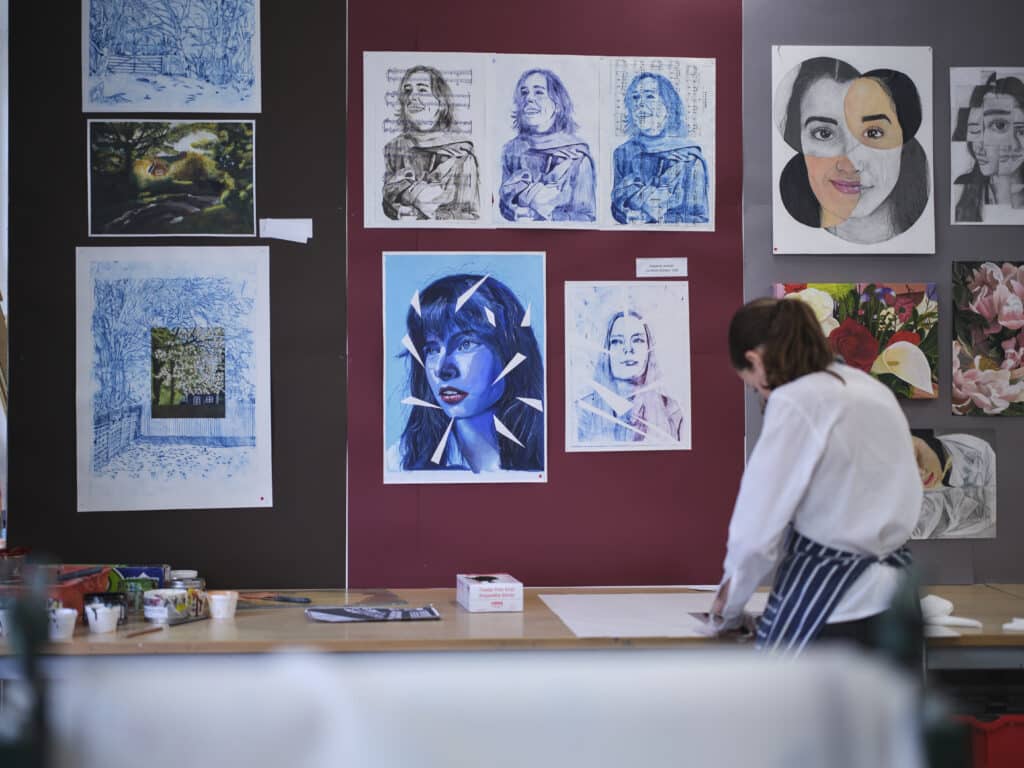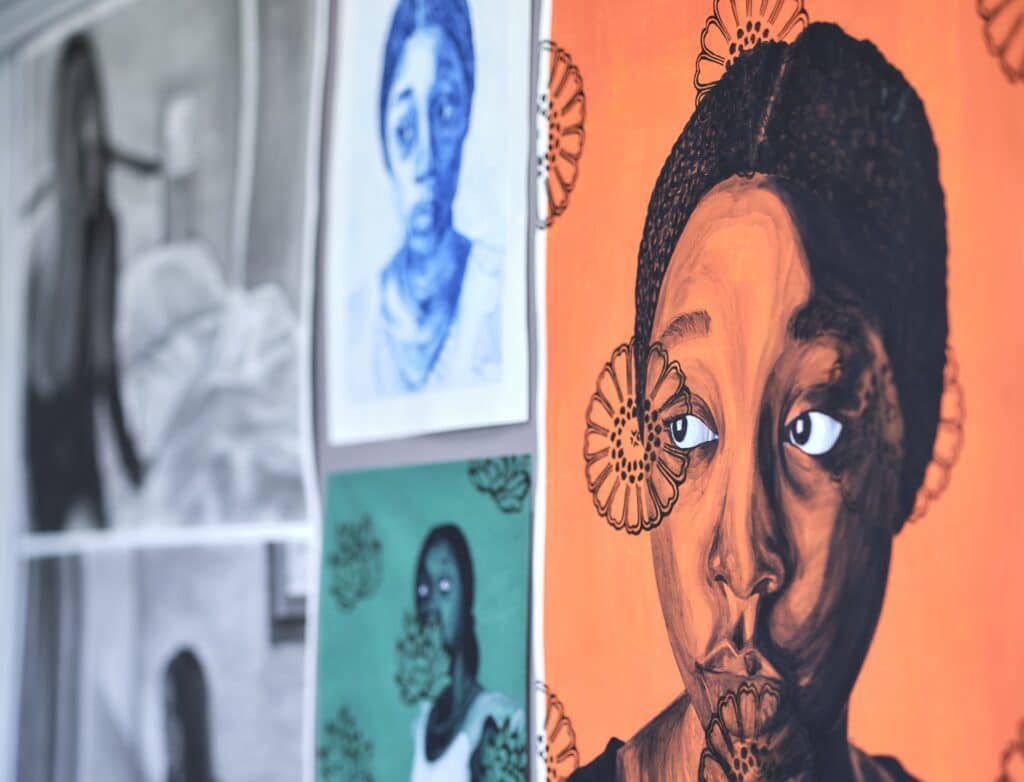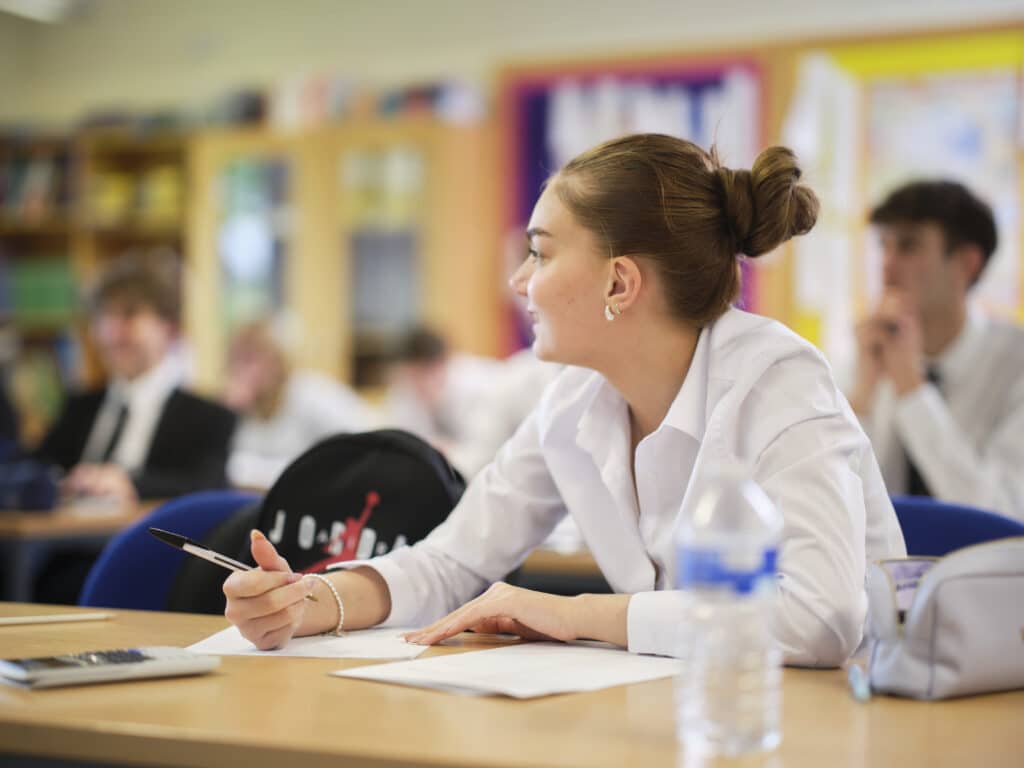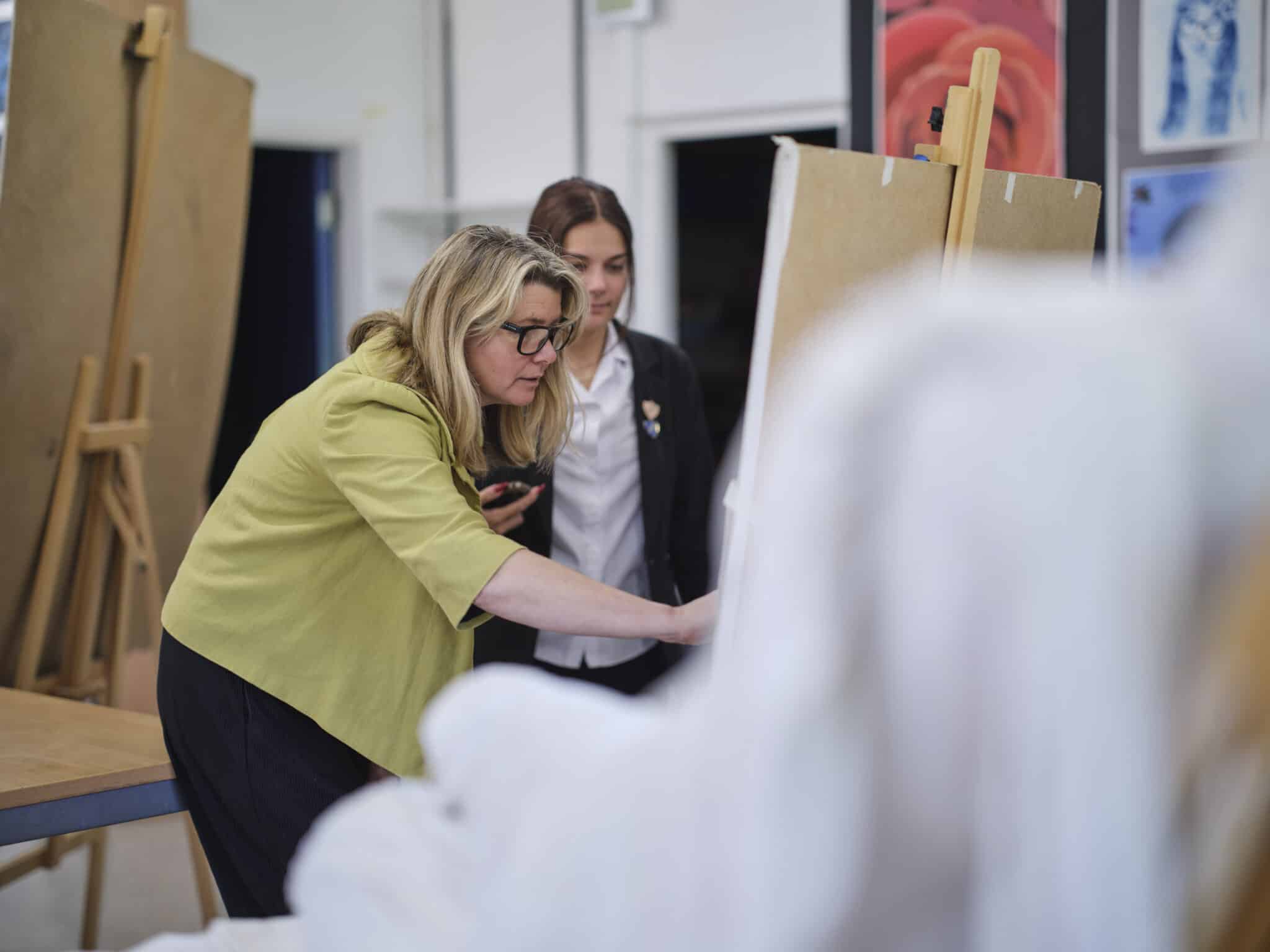
A Level Art (Critical & Contextual studies)
A Level Art – Critical & Contextual, at Kimbolton
A Level Art – Critical and Contextual at Kimbolton School combines the study of art history, theory, and analysis with creative exploration.

This course is ideal for students who are passionate about art and enjoy developing ideas through writing, research, and contextual investigation.
Assessment
The A Level Course is based on 2 elements. A Personal Investigation worth 60% of the overall mark and an Externally Set Assignment worth 40% of the Overall mark
Both projects are made up of 4 Assessment Objectives
The same four assessment objectives apply across both components. Each assessment objective is equally weighted. Below are the assessment objectives for this specification.
Learners must demonstrate their ability to:
- AO1 Develop ideas through sustained and focused investigations informed by contextual and other sources, demonstrating analytical and critical understanding.
- AO2 Explore and select appropriate resources, media, materials, techniques and processes, reviewing and refining ideas as work develops.
- AO3 Record ideas, observations and insights relevant to intentions, reflecting critically on work and progress.
- AO4 Present a personal and meaningful response that realises intentions and, where appropriate, makes connections between visual and other elements.
Beyond the classroom
- Visit galleries and exhibitions to experience art in its cultural context
- Join cultural trips to major artistic centres in Europe
- Keep a research journal to document key ideas and themes
- Keep up to date with the articles on art, and current exhibitions in the Tate Magazine and Creative Review, as well as weekend newspaper supplements in The Guardian, Observer and Sunday Times.
- Collaborate on creative projects like the school play or exhibition.
“Critical and contextual art allows you to see the world through the lens of creativity, culture, and history.”
You will enjoy Art if you…
- Are creative
- Enjoy independent projects
- Feel happy developing your ideas
- Like experimenting with materials
- Enjoy learning about art history
- Are passionate about exploring art through research and analysis
- Enjoy studying history and culture alongside creative processes
- Have a strong interest in writing and developing well-argued essays
- Value opportunities to investigate art within its broader context.
“Art historians and analysts play a crucial role in preserving cultural heritage, helping to contextualise and interpret works for future generations.”
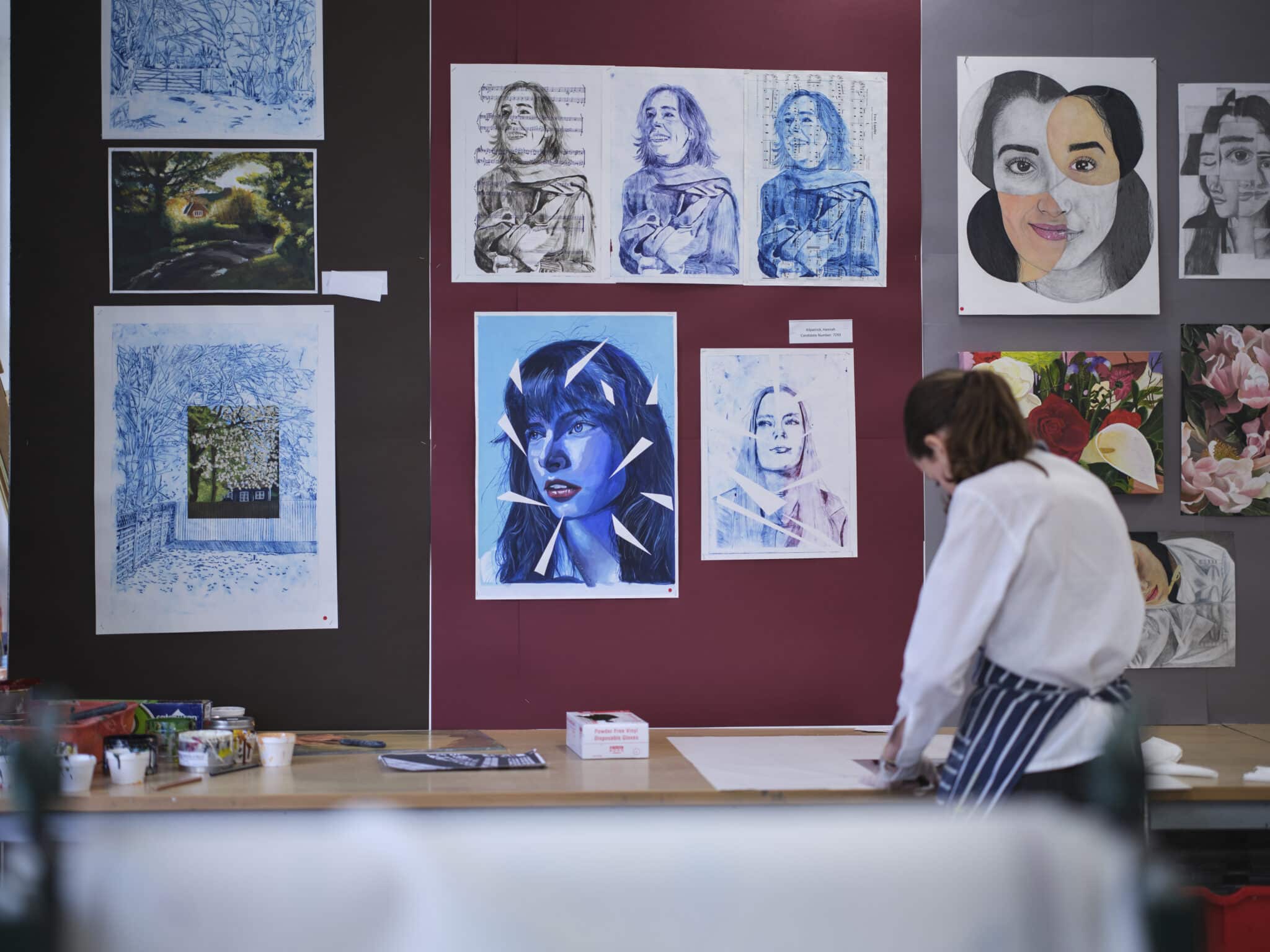
Did you know?
